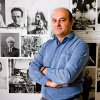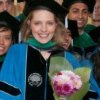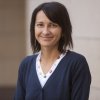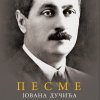Sidebar
Site Map
A great man is one who collects knowledge the way a bee collects honey and uses it to help people overcome the difficulties they endure - hunger, ignorance and disease!
- Nikola Tesla
Remember, remember always, that all of us, and you and I especially, are descended from immigrants and revolutionists.
- Franklin Roosevelt
While their territory has been devastated and their homes despoiled, the spirit of the Serbian people has not been broken.
- Woodrow Wilson
Dejan Stojkovic
Iva Dostanić
Iva Dostanić has finished the Fifth Belgrade Gymnasium and with her family moved to Vienna and then to Athens where she attended the American International School being the best student. She continued her studies at Manhattanville. Her did her postgraduate studies in biochemistry and molecular biology in Cincinnati where she defended her doctoral theses.
While at Cleveland clinic she received the Award for Medicine and Humanity.
She passed away on Tuesday, December 27, 2011.
The Iva Dostanic Physician Scientist Trainee Award is given annually by the Department of Medicine for the individual whose passion for the science of medicine, intelligence, creativity, work ethic, and accomplishments exemplify the best of medical research and the physician scientist.
Svetlana Rakic
Branko Bojovic
Dr. Bojovic is an expert in adult and pediatric craniofacial surgery, and microsurgery for congenital, oncologic and traumatic conditions. Among his specialties are adult microsurgical reconstruction of the head and neck following oncologic surgery, post-traumatic injury, and treatment of pediatric syndromic and non-syndromic craniofacial disorders, such as craniosynostosis and cleft lip and palate. His research focuses on composite tissue allotransplantation and tissue engineering, as well as clinical outcomes following surgery for cleft lip and palate surgery and facial trauma.
Aleksandar Kavčić
Kavčić received a degree in electrical engineering from Ruhr-University in Bochum, Germany, and a doctoral degree in electrical and computer engineering from Carnegie Mellon University.











